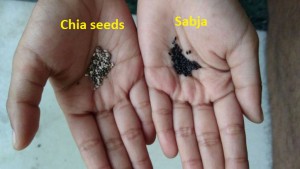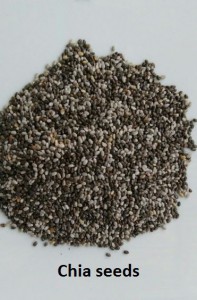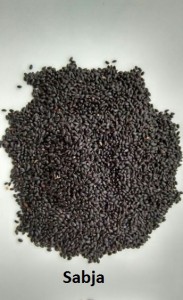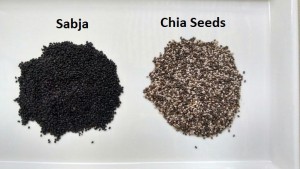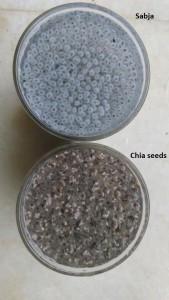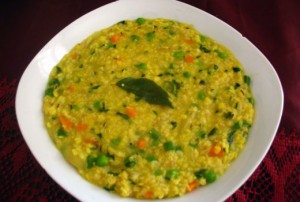
My love for ‘Khichdi’, a mixture of cooked rice with lentils, vegetables with tempered spices dates back to my childhood days. It’s the preferred choice of mothers to feed their child Khichdi (minus the spices) as it’s the easiest to digest, well-balanced \food. Khichdi is a mixture of Carbohydrates, protein, Fibre and calcium.
History of Khichdi
Just to take you a little into the history of Khichdi, the wonderful dish traces its origin in the Indian subcontinent as early as 1350. ‘Khichdi’ was recently promoted globally by the government as India’s ‘Super Food” and Queen of all foods”. The government also plans to globally promote Khichdi as healthy, delicious and easy to make Superfood of India.
The Great World food India event held at the India Gate Lawns, New Delhi set a Guinness book world record of making the largest portion of Khichdi weighing 918kg. Chef Sanjeev Kapoor and well-known yoga and Ayurveda Guru Baba Ramdev were among the eminent personalities who took part in preparing the KHICHDI. The humble khichdi has travelled across borders—From Egypt to Britain.
Taste better and retains nutrients when cooked in an earthen pot
Khichdi tastes best when cooked in an earthen pot. Clay pot’s porous nature allows both mixture and heat to circulate through the food. This results in aromatic food, which is generally lost in other types of utensils. Clay is alkaline in nature and it interacts with acidity in the food, thereby neutralizing the pH balance and eventually making the food healthy. It is believed to provide the required minerals including calcium, magnesium, iron, phosphorus and sulphur that benefits health. Due to its heat resistance and slow cooking, the food retains all its nutrients and moisture, therefore you would not require extra oil or fat for providing moisture to your food. Apart from calming the body and detoxifying it, the ingredients in khichdi also have the perfect balance of the basic elements required to improve energy, immunity and digestion.
Health Benefits
Khichdi is the food of choice of Panchakarma, a form of Ayurvedic healing that helps in mind, body healing and detoxification. Wondering why white rice is part of the mix? During cleansing, the metabolism slows down and the digestive strength weakens, so any food you eat must be very easy to digest. You also need adequate proteins to keep the blood sugar stable and burn fat, which is where the lentils come in.
Nutritional Benefits
Nutritionally speaking, khichdi and veggies make a balanced meal that reboots your digestive system after eating packaged and restaurant foods. And if you want to add some colour to your khichdi, try a palak khichdi. It’s one of the healthiest one-dish meal you’ll eat. For most, khichdi is the kind of food you eat when you are unwell as it is considered a bland dish. While, yes moong khichdi is an easy-to-digest meal when you have an upset tummy or fever but hey, that’s not what khichdi is all about. Every region in India has a unique variant of this dish.
There is Bengal’s khichuri; Haryanvi Kichri with Bajra and moong dal served with lassi; Bisi Bela Bhat in Karnataka; Hyderabad’s popular breakfast khichdi-kheema khatta are some of the popular khichdi varieties.
Varieties of Khichdi
Moong khichdi may not fit in your definition of tasty food, but in Surat, this is a much-loved meal. You’ll love their khichdi served with piping hot kadhi, a mixture made of curd and some add-ons like cooked vegetables. Khichdi is the ultimate comfort or soul food, however humble it may be.
Bajra ka khichdi is a popular dish in Rajasthan eaten during winter. Bajra along with ghee keeps your body warm and your skin soft and supple in the cold weather. You can whip up a lip-smacking bajra khichdi at home.
So let me share some amazing khichdi style with you
Daal Khicdhi—simplest and common one( rice, tur dal, spices, veggies, peanuts and desi ghee).
Bhogar Khichdi–(rice, moong dal, veggies, spices, and desi ghee)—This is BENGAL speciality.
Sprouted lentil khichdi–( rice, sprouted lentil, herbs spices, desi ghee)
Pongal (Tamil Nadu khichdi)-(rice, moong dal, desi ghee, Kaju, spices.
Barely khichdi-(barley, herbs, veggies, spices, desi ghee)
Khato-–Hyderabadi khichdi (rice, moong dal, veggies, desi ghee)
Mushroom pesto khichdi–( rice, mushroom, cheese, pasta, pine nut and desi ghee)
Corn Palak khichdi–( rice, moong dal, corn, spinach, spices, desi ghee)
Sabudana khichdi–( sabudana, peanuts, potatoes, and desi ghee) You can enjoy khichdi with curd, buttermilk, grilled fish and veggies.
So let’s cook some Khichdi in one meal today and sooth our soul.


